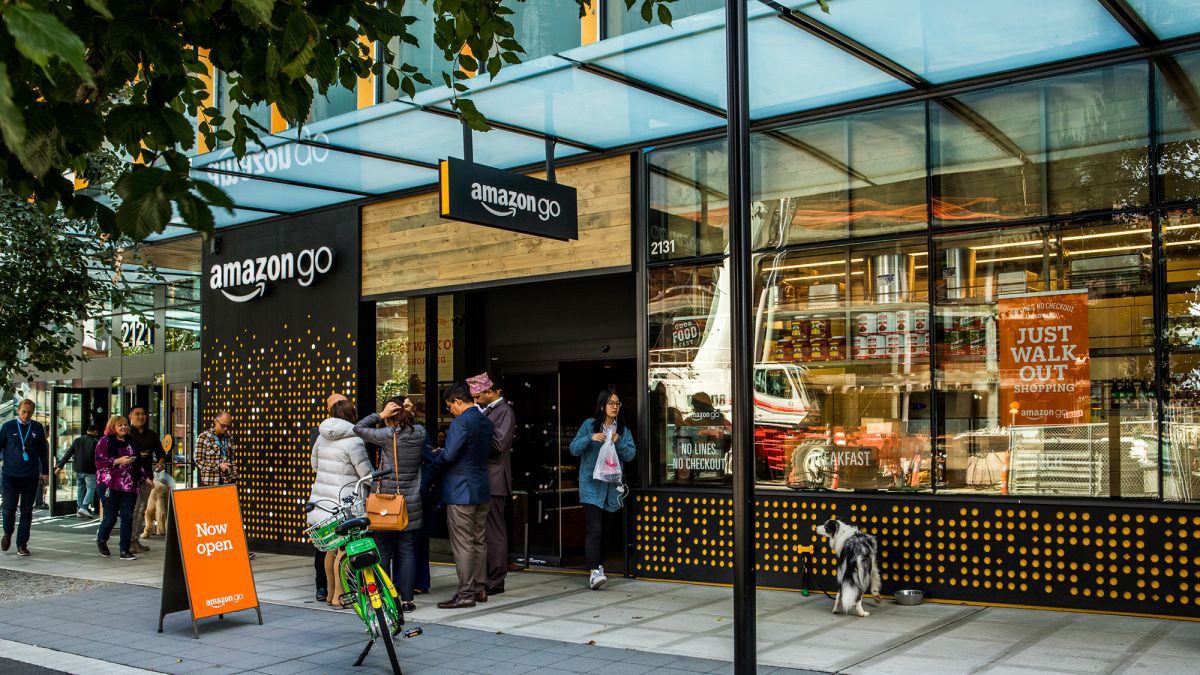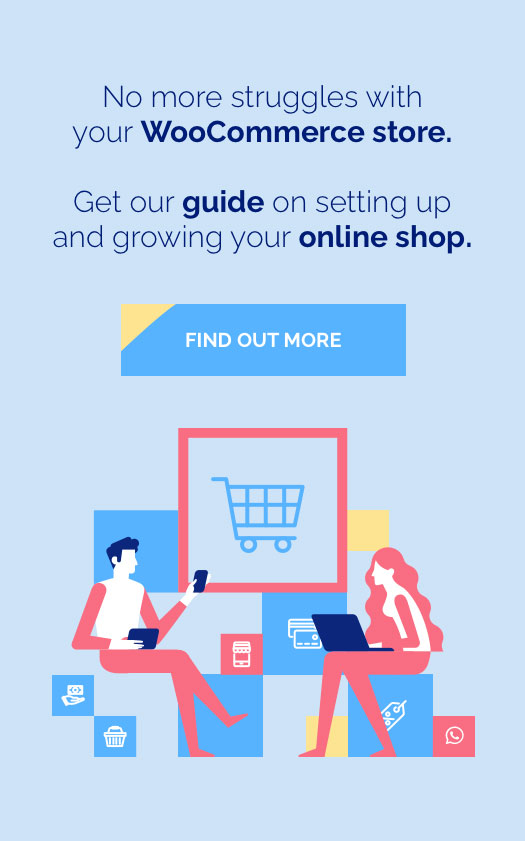When eCommerce sites first became available, many customers were hesitant to use them because they couldn’t physically see or touch the products. Instead, they had to pay in advance and go through a long and tedious online payment process if they wanted to buy. Or, even worse, they chose not to purchase at all.
Today, everything has changed. As a result of the pandemic’s digital transformation and acceleration, the eCommerce industry has drastically changed for the better, offering faster checkouts, safer online transactions, and making it feel like you are in an actual physical store.
According to Statista, there were 2.14 billion digital buyers in the world back in 2021, which is, in fact, not that long ago since we’ve only just begun kicking 2022 in the curve.
Digital technology remains at the heart of the eCommerce industry, and it has been used to enable sellers to connect with their customers via web and mobile platforms. But this also means that it can cause a significant cultural and organizational shift. And one thing is sure: the eCommerce industry is not immune to this digital tide.
So without further ado, let’s see how eCommerce brands have adapted to the new digital trends such as augmented reality!
How AR and VR Are Changing The Face of eCommerce
Implementing cutting-edge 3D technology and AR features could be an excellent way to take the company to greater heights. But what exactly are these technologies, and what value can they add to eCommerce businesses?
Virtual Reality (VR) uses computer technology to create a virtual space. Except for traditional user interfaces, VR immerses the user in an experience. Users are absorbed and able to interact with 3D worlds rather than viewing a screen in front of them. By simulating as many senses as possible, such as eyesight, hearing, touch, and even smell. The only limitations to near-real VR experiences are the accessibility of content and cheap computing power.
Augmented Reality (AR) is a technology that enables people to interact with digital content (such as text, graphics, video, audio, and images) in real life. AR works by projecting digital files onto real-world objects. In practice, this would imply putting a digital bed in your room before buying it to see how it looks.
When online shoppers rely on electronic images to make purchases, they miss out on the “touch and feel” experience in brick and mortar stores because traditional 2D images do not provide a comprehensive view of product education and engagement.
This is where 3D comes into play. Instead of a traditional 2D image, 3D is a three-dimensional visualization that allows potential customers to see a product as it is in real life. An increasing number of brands are currently using this technology to improve the online shopping experience. In a previous blog post, we discussed the benefits and drawbacks of product photography and 3D rendering technology.
In practice, 3D visualization may display a 360° view of a purse or a watch on an online store.
Just like in the examples below:

You will see the product from all angles by clicking on the first icon.
A 360° product viewer improves the shopping experience by allowing online shoppers to interact with the product simply by moving their cursor over it. To view the product from every angle, simply click and drag. This provides prospective customers with a sense of control.
Another 360° view example comes from a furniture app that gives its customers a better idea of how the items look.
Wellview Solutions is an AR and VR solution for online furniture shops. Store owners will provide their potential customers with their products’ 3D, AR, and VR experiences. For example, a user will place a sofa inside a room and rotate it on all sides while browsing through the material options, color options, and other features linked to the price list. This means that clients can load photos of their space and test the look and feel of a product via a web application or, even better, do it in real time via a mobile device wherever they are.
According to research, 3D and AR features can increase user engagement and make an online shopping experience more interactive.
As 3D and AR technologies become more common and appealing in eCommerce, some major eCommerce brands incorporated them into their marketing strategy and saw excellent results.
Let’s find out what they did!
How eCommerce Brands and AR Technologies Fit Like a Glove
We’ve focused our attention on some brands that have successfully incorporated 3D and AR techniques into their online stores, resulting in increased engagement and conversions.

Without a doubt, one of the best AR apps to hit the consumer market early on. Ikea was one of the first and most successful users of augmented reality. It was one of the first companies to use 3D and AR technology in its marketing strategy. IKEA Place, an augmented reality app, was released in 2017. It lets users place true-to-scale 3D models in their homes before purchasing virtually.
When you first launch the app, you’re greeted by a chatbot-like dialogue that will eventually guide you through your journey. Then, depending on which button you press, you will be taken directly to the store’s highlights section, where you can find various pieces of furniture series and kitchen or bathroom-specific products.
In practice, the app determines which rooms in your home are best suited for a new sofa or a closet. Furthermore, IKEA Place allows users to test different types of products and which size or color would best fit their home space.
IKEA saw the following results after incorporating the app into its marketing strategy:
- The company’s online sales increased by 43% in 2019;
- The company’s annual revenue worldwide reached $40 billion in 2019;
- Increased online sales account for a portion of this.
2. Bumbleride
Bumbleride is an eco-friendly stroller retailer that has begun incorporating 3D modeling into its marketing strategy to showcase its products.
Potential customers can test out the strollers in real time, thanks to 3D and AR features. This is extremely useful for expecting parents because it allows them to see how much space the stroller will take up in their homes.
Furthermore, 3D visualization allows potential customers to get a real-time sense of the product, including its model, color, texture, and more. For example, Bumbleride saw the following results after incorporating 3D models into their e-shop:
Their stroller conversion rate increased by 33%, and their visitors’ average time spent on the brand’s online shop increased by 21%.
3. Nike

Nike began testing 3D printing technologies in footwear manufacturing in 2013. Over time, the test proved successful, allowing Nike to develop new and innovative products.
The brand’s app automatically filters appropriate shoe sizes. In addition, it allows users to choose their favorite styles and colors without worrying if they’re a good fit by scanning a user’s foot and measuring its entire shape.
Nike’s marketing strategy currently includes augmented reality and 3D models. For example, the Nike by You feature allows users to personalize and share their favorite sneakers on social media.
This feature boosts user engagement by allowing potential customers to experience how they look and feel in real life. As a result, Nike increased their conversion rate to 11% by implementing AR and 3D technologies.
4. Tesco

Tesco, a multinational grocery retailer, began investigating options for more continuous supply chain evaluation in 2019. The UK-based company wanted to evolve how it monitored compliance across its supply base, focusing on constant improvement, with 45 distribution centers, 6,700 retail stores, and more than 400,000 employees worldwide.
It did in the matter to use augmented reality (AR) to help modernize its brand and reach younger consumers via a unique partnership with Disney. Tesco created its own Tesco AR Discover App, which assisted in bringing to life Disney Frozen-branded products sold in Tesco stores.
Kids and their parents could, for example, look through a Frozen sticker book and use the AR app to impose selfies of their children with their favorite Frozen characters. In addition, Tesco’s Discover app increased foot traffic to their retail locations while increasing social media visibility as kids shared selfies on Instagram and Facebook.
5. Walmart

A video is going viral on Twitter these days, claiming to show how Walmart envisions Shopping in the #Metaverse. This means that a virtual avatar browses virtual grocery shelves, picking and tossing items into a shopping cart, saving you the trouble.
The response to the video has been lukewarm, indicating that the world may not want to VR shop in the metaverse, but the catch is that this video is five years old, having been presented in 2017. There’s no word on whether Walmart has retained this concept or how its virtual stores would look today, but there’s no denying that the idea shook some people up.
As per Google, the video was created in 2017 by a digital agency for Walmart. The app allows users to interact with special in-store signage located throughout Walmart stores, online, and in the retailer’s weekly flyer to get an augmented reality experience.
“Users can interact with signage throughout the store, turning a regular shopping trip into an adventure,” said Jeff Tate, category marketing manager at Walmart Canada in Mississauga, Ontario, Canada.
Another exciting thing Walmart did was that it announced in October 2020 that it would be converting four of its physical retail stores into test stores to experiment with new technology to enhance all stores to become physical shopping destinations and online fulfillment centers.
Inventory control is an essential aspect of these stores, with one test involving an app designed to reduce the time it takes to transport items from the backroom to the sales floor. Instead of scanning each box, the app uses augmented reality, allowing employees to hold up a handheld device to highlight the packages ready to go.
6. Amazon Go

Amazon’s cashier-free service Go stores are arguably one of the most ambitious retail projects launched in a long time. Customers will be able to “just walk out” of the app, which means they will not have to wait in long checkout lines, and payments will be automatically calculated and deducted from their accounts.
The platform also generates massive amounts of data, which allows for indirect optimization of the workforce and supply chain. For example, with that information, the system can determine how many picks per hour each stocker completes and when items go out of stock.
It also knows when the products are out of stock, so they know how much to allocate on the shelf to ensure the allocation lasts the entire day.
Random manual audits are performed in many self-checkout systems in the United States (Costco) and Europe (Tesco) to ensure customers are not stealing. Unfortunately, customers are so frustrated that it sometimes questions the system’s viability.
Instead of stopping customers, Amazon Go solves this by deploying several Human-In-The-Loop (HITL) labelers who take all of the system’s input and try to infer what happened on the shelves by using shelf sensing technology that recognizes whether a customer has picked up a product or placed it back.
7. McDonald’s

Yup, we bet you didn’t see that coming!
In 2016, McDonald’s celebrated their 30th anniversary of the Happy Meal in Sweeden, so it developed the so-called ‘Happy Goggles.’
The Happy Goggles VR headset was created for McDonald’s to capture children’s attention. This tool boosts in-store engagement while also promoting the idea of repurposing a disposable item for a new purpose.
According to a press release from McDonald’s, customers can create a pair of virtual-reality glasses by re-folding the Happy Meal box, allowing them to experience virtual reality with a smartphone.
“The Happy Meal must simply evolve with the times.” However, evolution does not always imply radical change. “It meant a little ripping, folding, and sliding for us,” the company explained.
Furthermore, The Happy Goggles soon released a game called Slope Stars, allowing children to ski down a mountain with 360-degree views. The Swedish Ski Team has also endorsed the game, demonstrating their commitment to its quality.
So What Can You Learn From All This?
As we’ve seen, there are numerous ways for brands to integrate AR and VR into the online shopping experience. However, AR and VR are not required to be directly linked to sales.
Instead, you can use it to:
- Raise brand awareness and generate buzz in the industry;
- Drive cross-channel web traffic and attract customers looking for better shopping experiences;
- Bridge the gap between traditional and online shopping;
- Determine how a sofa will look in your living room before you actually buy it;
- Provide your customers with a taste of what it’s like to drive a Mustang, for example;
- Lessen the strain on your sales support teams;
- Remove friction from the customer journey;
- Improve digital marketing efforts;
…aaaand, the list could go on and on!
The time for AR and VR is now. AR and VR are no longer considered cutting-edge technologies. Not only are the examples given above fueling the growth of these technologies in eCommerce. In addition, the pandemic is also hastening the adoption of augmented reality and virtual reality.
Over to You
Despite its many advantages, eCommerce creates a barrier between brands and consumers, making it more difficult for customers to understand your products and imagine how they might be used in real life. And this is where 3D techniques, AR, and VR can come in handy.
Another little-known fact is that Grand View Research valued the global virtual reality market at $15.81 billion in 2020 and expects it to grow at an 18% compound annual growth rate until 2028. With industry growth, eCommerce brands will continue incorporating AR and VR into the online shopping experience, evolving in ways that delight customers.
So, if you’ve been hesitant or waiting for a sign to begin incorporating AR and VR into your online store, this is it. There has never been a better time than right now.

Gabriella is a Digital Content Writer and Marketer with a zeal for all things WordPress. When she’s not researching and drafting the upcoming articles, you can find her in the open air exploring the outdoors with her dog.










Comments are closed